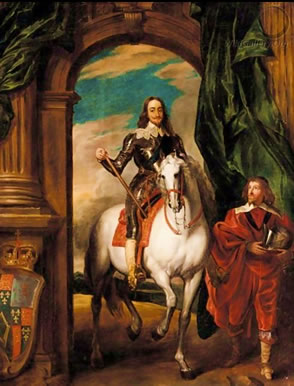Causes of the English Civil War - Timeline

To understand the causes of the English Civil War, one has to examine the preceding years back to around 1625. That was the beginning of the decline in the relationship between Parliament and the Crown, under the reign of Charles I. This was the year that James I died and Parliament were disappointed to learn that his successor Charles I fully intended to allow George Villiers, the Duke of Buckingham, to carry on as an influential crown adviser. Thus began an undercurrent of long term causes of the war that were followed by specific causes that set the conflict off.
1637: The Scots were outraged with the orders by Charles I for them to pray in the same manner as the English, as demanded by the high church ecclesiastic William Laud. Rioting broke out in Edinburgh before spreading across most of Scotland.
1638: Charles despatched the army up to Scotland to quell the rioting. The Scots fought back and defeated the English force.
1639: Thomas Wentworth, lord President of the North, was recalled from Ireland to answer for his treatment of English officials. But not only was he exonerated by Charles, he was made 1st Earl of Strafford and appointed to advise the King. He had raised a large Catholic army in Ireland to fight against the Scots but they were forced to remain at home.
Charles was impressed by the tough and thorough manner in which Wentworth had raised the Irish army and hoped that he could do a similar job in England.
1640: In April Lord Strafford recommended a parliament that he and Charles thought would be co-operative in terms of granting money to fight the Scots. However they refused and accused Strafford and Laud of abusing their powers. Charles immediately dismissed the parliament.
In August England was attacked by Scotland. The English force was defeated, with Durham and Northumberland taken over. In November, Charles summoned Parliament to raise money, this time not to fight the Scots, but to pay them off so that they would retreat from England. Parliament had the purse strings and therefore held the upper hand in the situation. Upon convening they made sure that their first order of business was to get rid of Strafford and Laud, who were both sent to the Tower of London.
1641: Charles failed to release Strafford from the Tower and in May Lord Strafford was tried for treason and charged with plotting to defeat the English parliament with his Irish army. He was duly executed on May 12. From June through August parliament dismantled many of the structures (including the Court of Star Chamber) that Charles had put in place during his ‘Eleven Years Tyranny’ rule of England. In November the Catholic Irish rebelled against the aggressive colonisation of the Protestant settlers.
The relationship between Parliament and Charles I further deteriorated after they clashed over the Church of England. Parliament wanted to change to a more puritanical and less Catholic model that would necessitate the abolition of bishops. It was quite evident by December that there was no common ground left between Charles I and Parliament.
1642: Charles suspected that five members of Parliament had colluded with the Scots in the English invasion and made to arrest them with an armed guard. However, the parliamentarians escaped and Charles’s botched attempt was considered to be a serious breach of parliamentary privilege, even by his supporters. He was forced to flee the capital and spent the next eight months rallying support and building up an army through commission of array. Several attempts to negotiate a settlement failed and finally on 22nd August 1642, Charles raised the royal standard in Nottingham.
See also:
MLA Citation/Reference
"Causes of the English Civil War - Timeline". HistoryLearning.com. 2026. Web.
